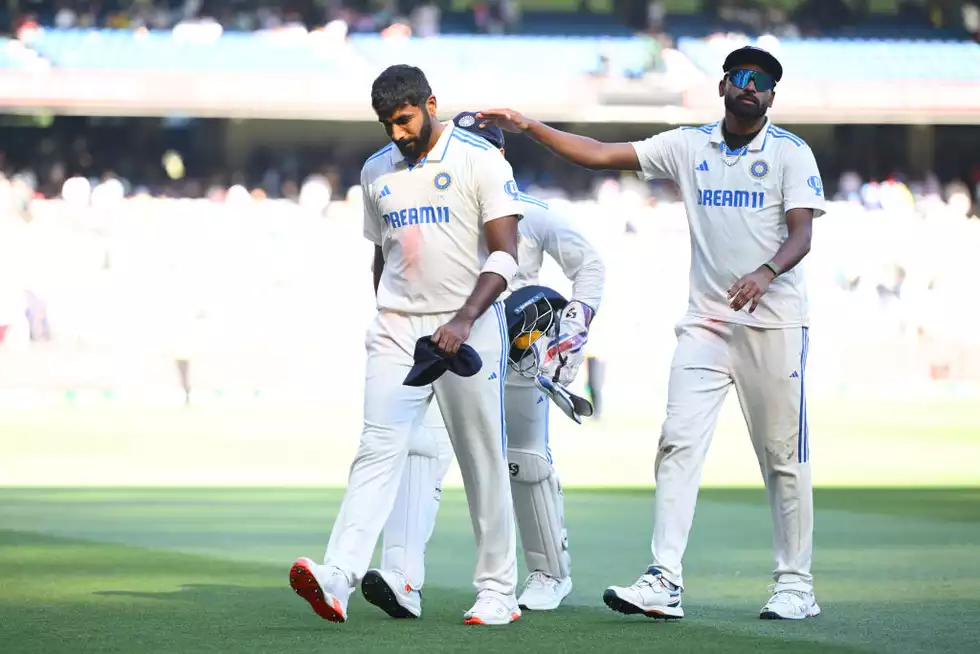
India’s bowling veterans have a workload problem to deal with due to the imbalanced distribution of the bowling load.
Before beginning what would be his seventh over of the innings, Shardul Thakur gave the umpire his helmet and jumper and started a few simulated run-ups. Then, when he was readjusting his fielders, his captain Shubman Gill had a change of heart.
As he had been at every point of need throughout the past two days, but particularly at the conclusion of a session, Jasprit Bumrah was called upon again from deep at fine leg. After a quick stretch and limber-up, Bumrah stood up at the top of his mark, while an astonished Thakur shuffled away from the scene.
He quickly claimed his 14th five-wicket haul in Test cricket, dismissing Josh Tongue and Chris Woakes. Although it was another performance that deserved his highest honours, it also hid a more urgent reality: this was primarily a solo effort that was compelled to happen since the rest of the attack was unable to reach his high water mark on a course that provided little even on the third day.
India had produced 471. Despite Bumrah’s genius, England answered with 465. Additionally, a game that had given India multiple chances to defeat England was now reduced to a shootout in the second innings.
Ben Stokes fell, leaving England at 276 for 5, still 195 down, just as the visitors appeared to be about to make amends for the mistakes of Day 2. On distant excursions, however, the lower-order difference—an old enemy—resurfaced. England’s final five wickets accumulated 189 in 35.5 overs, while India lost their final five wickets for 24.
Not a single batter was responsible for India’s 7 for 41 collapse. It was group-based. However, Thakur’s removal represented the vulnerability that India has long attempted to repair. Only Bangladesh and Sri Lanka do worse than India, which has been ranked No. 8 to 11 among SENA countries since 2018, with an average of just 11.96.
India now has seven frontline quicks to choose from on this tour as Harshit Rana joined the team. Even though Thakur isn’t the fourth-best bowler among them, he is still in the running because he is the only one who can be relied upon to bat at number eight right now. India’s strategy has frequently been governed by the fear of fielding four No. 11s. As the batting ability drops off a cliff beyond Ravindra Jadeja at No. 7, Thakur, who has demonstrated that he can bat somewhat at the Gabba and The Oval, provides a sliver of resistance.
India has become accustomed to this compromise. Additionally, they are constrained by circumstances that have historically rendered spin useless on these excursions.
But Gill and Gambhir will have some thinking to do after what happened at Headingley in India’s opening bowling innings. Only six of India’s 100.4 overs were deployed by Thakur. One bowler will probably be underbowled in a five-man attack, but India’s distribution of 25, 27, 20, 23, and 6 overs, respectively, is not as favourable as England’s more evenly distributed distribution of 24, 22, 20, 20, and 27.
The issue Gill faces is the workload on India’s bowling veterans. On an uncooperative surface, Thakur was brought into the attack in the 40th over and quickly established himself as the type of medium-pace bowler that this England squad deliberately seeks out for a release. In the end, Thakur gave up 38 runs at an economy rate of more over six.
For India, this is where things become complicated. The pressure fell, as it so frequently does, on Bumrah and Mohammed Siraj since Thakur was played sparingly and Prasidh Krishna did not offer a defensive edge.
Thus, we reach the growing dilemma of India. They made the right choice, but if they don’t use it properly, they run the possibility of adding new problems to their already existing travel issues. a fragile tail. An unbalanced assault. a tremendous burden on individuals who are capable of both magic and lifting. As so often happens, Bumrah was the source of the magic in this instance, but India cannot afford to continue to tell that tale.
In Leeds, they continue to lead. However, they will need to do more than just have faith in their own genius if they want to maintain their lead throughout the summer. They will need to find a better way to allocate their resources. Especially if India’s bowling veterans are overworked the way they are.

